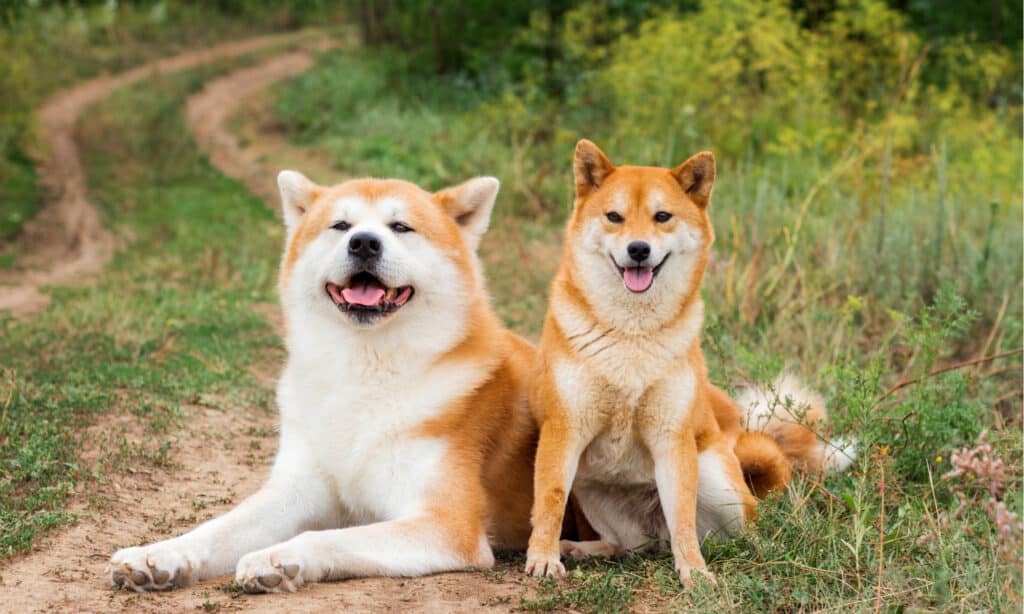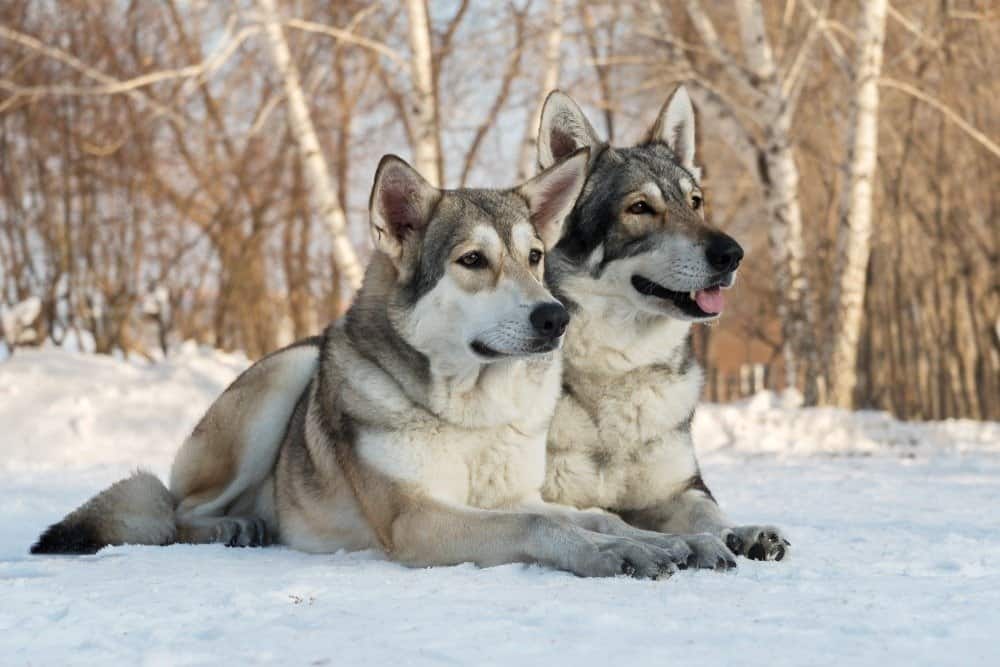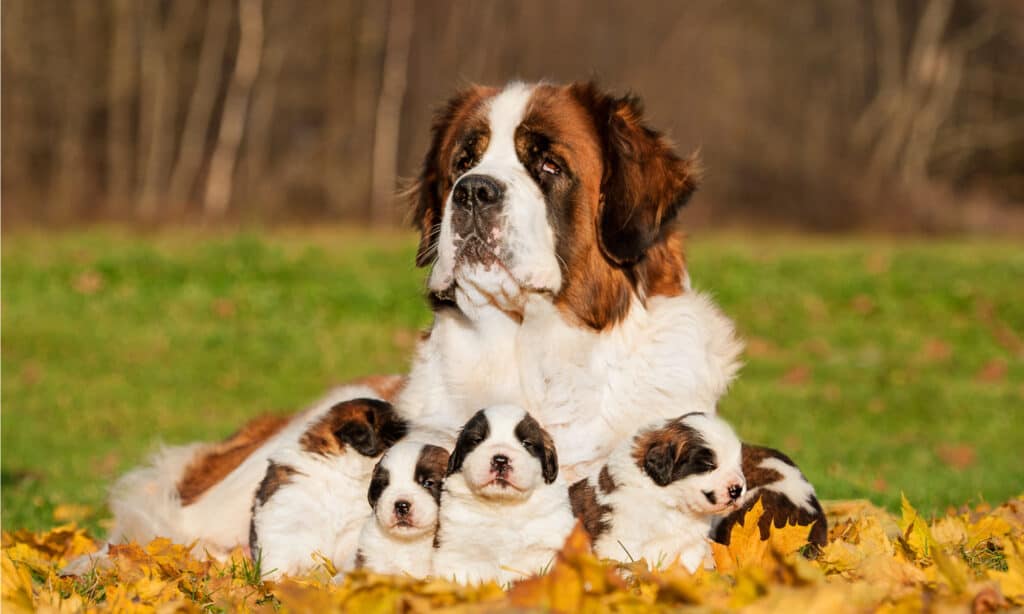Domesticated dogs have played a significant role in human civilization throughout history. They are also among the first animals that humans ever domesticated. Humans have revered dogs for many centuries, even in our ancient past. As it turns out, dogs, in the ancient Egyptian culture, were regarded as being godlike.
There is no doubt that dogs are man’s best friends today. Having said that, how much do you really know about dogs? Are you interested in learning more about our furry best friends? When it comes to dog mating season, have you ever wondered if there is a certain season during which they mate? In this article, you’ll discover more about dogs and when they start breeding, so if you are curious, keep reading.
When Is Dog Mating Season?

A dog’s breeding season does not coincide with any specific time of year.
©FunFamilyRu/Shutterstock.com
Is there a specific time when dogs breed? Do they start breeding at a certain time of year? As a matter of fact, domesticated dogs have no specific breeding season that corresponds to a specific time of year during which they can breed. There are two exceptions to this rule: Basenjis and Tibetan Mastiffs, which usually cycle in the spring. Based on that knowledge, what is the breeding process for dogs like?
Breeds and individual dogs can vary in the interval between when they come into heat, but dogs generally come into heat every two months. A young dog’s first cycle is normally somewhat irregular, which is to be expected when she begins to cycle for the first time. In order for a female dog to be able to develop regular cycles, it may take up to two years. Since dogs don’t have a specific breeding season, let’s learn more about when they go into heat and what behavioral changes they go through when in heat.
When Does Heat Start in Dogs?

Generally, dogs go into heat between six and eight months of age, although some breeds go into heat as early as four months.
©yykkaa/Shutterstock.com
It is possible for dogs to go into heat as early as four months old in smaller breeds, but the average age is about six months old. It is possible for some giant breeds to not enter their first heat until they are 18-24 months old. When it comes to breeding young female dogs, it is strongly recommended that they should not be bred during their first or second cycle. They have not yet matured their eggs, and the dog has not yet reached full maturity either.
What Are the Signs That a Dog Is in Heat?
A number of behavioral changes occur when an animal goes into heat or begins to breed. There is no exemption for dogs in this regard. The term “in heat” refers to a female dog being open to mating and releasing mating hormones. It’s normal for a female dog to become less energetic, more aggressive, urinate more often, and run away from home if she’s going into heat. Male dogs, on the other hand, do not go through heat cycles.
The dog’s heat cycle actually consists of four stages:
- The proestrus stage: This is the first stage of a dog’s heat cycle. It has no set duration, but it can last for three to 17 days. During this stage of the heat cycle, a female dog may exhibit changes in personality, appetite, and tail-tucking frequency.
- The estrus stage: As a female dog’s heat cycle enters its estrus phase, she is naturally triggered to follow her breeding instinct. At this stage, she is the most fertile as her ovaries release eggs for fertilization. She also has a strong preference for male companionship at this stage. This stage typically lasts between three and 17 days, during which she raises her rear toward male dogs.
- The diestrus stage: This stage marks the end of the dog’s heat cycle. Female dogs entering this stage who have been impregnated will spend about 60 days during this stage until their puppies are born. A female dog will no longer be as interested in male companionship at this point.
- The anestrus stage: There is a range of 100 to 150 days between this stage of the dog’s heat cycle and the next. During the anestrus stage, a female dog rests. As soon as this stage is over, the dog’s heat cycle starts again.
The Mating Process of Dogs
The dog mating process is important to understand, especially if you’re a dog owner. A female dog unexpectedly becoming pregnant may not be something you want to happen to your pet. If this happens, you could end up with lots of little puppies that you are not prepared to take care of! A dog’s mating process is pretty straightforward. In most cases, the male dog begins by smelling the female dog’s private area. When she is receptive, she will pull her tail to one side, a behavior called ‘flagging.’ As soon as the male mounts the female, the puppy-making process begins.
Gestation Period: How Long Are Dogs Pregnant?

For dogs, pregnancy lasts approximately nine weeks or between two and three months.
©Rita_Kochmarjova/Shutterstock.com
Pregnancy in dogs lasts approximately nine weeks or around 63 days from the time when an egg is fertilized, which is the point of conception. However, it is important to note that this can by over several days. As the pregnancy progresses through its three months, it can be divided into three stages.
The three stages include:
Pregnancy During the First Month
Sperm enters the female’s uterus and enters the uterine lining around the 16th day of pregnancy. It is around day 22 that the fetuses start to develop. In the early stages of pregnancy, your dog probably won’t show any major signs of pregnancy. However, the fourth week may bring morning sickness symptoms, weight gain, and fatigue for your pup. This is when you may start to notice that something is up!
Second Month of Pregnancy
It is common for the fetuses to grow rapidly by the second month of pregnancy. Puppy fetuses begin developing their skeletons, claws, and coats at the end of the second month. Several days after that, the pregnant female will seek out a place to lay for when she gives birth to her puppies. During this month, you’ll notice changes in your pup’s behavior, like an increase in affection or withdrawal from contact and changes in appetite and weight gain.
Third Month of Pregnancy
In the final days of pregnancy, the puppies will start to move into a birthing position in the mother’s birth canal after almost fully developing. As the mother approaches this stage, she will likely become restless, pant, pace, and lose her appetite. It is also common for their body temperature to drop in the hours leading up to labor.
A good idea is to prepare a maternity box for your dog so that when she delivers her puppies, she will have something to place them in. To give your pregnant dog a place to nest during the time of her pregnancy, line a comfortable box with soft blankets or soft bedding. When she expects to give birth, she will be able to go to this area to get ready for the birth process.
The behavior of your pregnant dog is likely to change during labor, as she will become restless and will refuse to eat. Afterward, the puppies will be born. It is possible for labor to last for several hours to several days. However, it shouldn’t last more than 24 hours. Every half hour or so, puppies should appear one at a time, but no longer than two hours at a time.
Up Next:
- Spider Mating Season: When Do They Breed?
- Cardinal Mating Season: When Do They Breed?
- When is Skunk Mating Season: When Do They Breed?
The photo featured at the top of this post is © Meesiri/Shutterstock.com
Ready to discover the top 10 cutest dog breeds in the entire world?
How about the fastest dogs, the largest dogs and those that are -- quite frankly -- just the kindest dogs on the planet? Each day, AZ Animals sends out lists just like this to our thousands of email subscribers. And the best part? It's FREE. Join today by entering your email below.
Thank you for reading! Have some feedback for us? Contact the AZ Animals editorial team.






